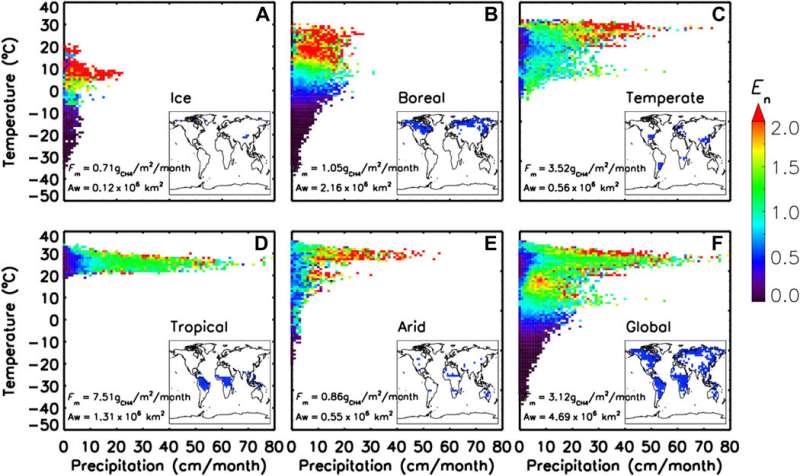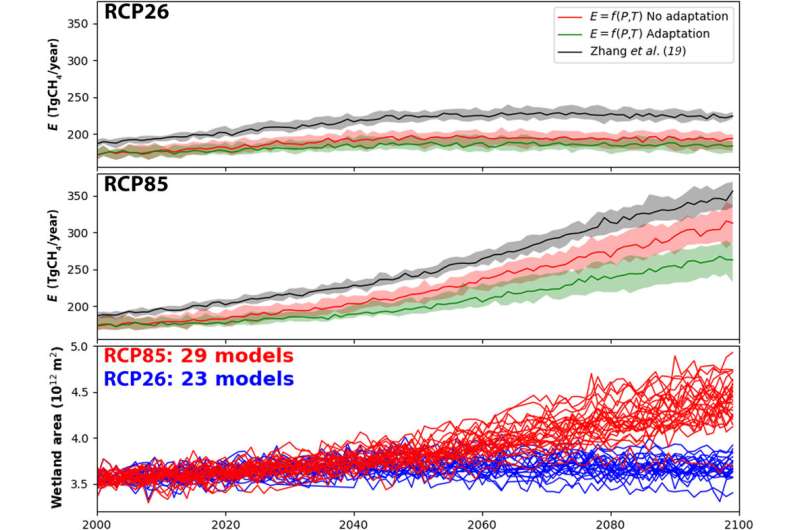April 13, 2020 report
Study shows global warming could push methane emissions from wetlands 50 to 80 percent higher

A team of researchers at the European Commission Joint Research Centre, in Italy has found that if global warming is not curbed by 2100, methane emissions from the world's wetlands could increase by 50% to 80%. In their paper published in the journal Science Advances, the group describes their study of wetlands in five climatic zones and what they found.
Greenhouse emissions include more than just carbon dioxide; methane gas in the atmosphere also contributes to global warming. And while there may be far less methane in the atmosphere than carbon dioxide, methane is much better at holding in heat. For this reason, scientists have been attempting to find out how much of an impact rising temperatures may have on the world's wetlands. Prior research has shown that wetlands are the primary source of methane emissions. And the amount of methane emitted by bog ecosystems is strongly related to air temperature, the depth of the water and the unique characteristics of organic substances they contain. Prior research has also shown that all three characteristics are impacted by warming temperatures. In this new effort, the researchers sought to find out how wetlands might be impacted if global temperatures continue to rise at their current rate over the remainder of this century.
As the researchers note, wetlands absorb carbon dioxide, and researchers have previously sought to find out if they will release some of their carbon dioxide due to global warming—but little work has been done to learn more about how global warming will impact wetland emissions of methane.
In their work, the researchers divided the planet into five climatic zones, each of which have their own unique type of wetlands: boreal, swamp, arctic, tropical and arid. They then carried out experiments designed to show changes (increases) in methane emissions for each type of climate zone. That was followed by calculating the amount of increased methane emissions for each zone and then by adding emission increases from all the zones together. Their calculations showed emissions increasing from 50% to 80% by the end of this century, which, they note, would serve to accelerate temperature increases.

More information: Ernest N. Koffi et al. An observation-constrained assessment of the climate sensitivity and future trajectories of wetland methane emissions, Science Advances (2020). DOI: 10.1126/sciadv.aay4444
Journal information: Science Advances
© 2020 Science X Network




















